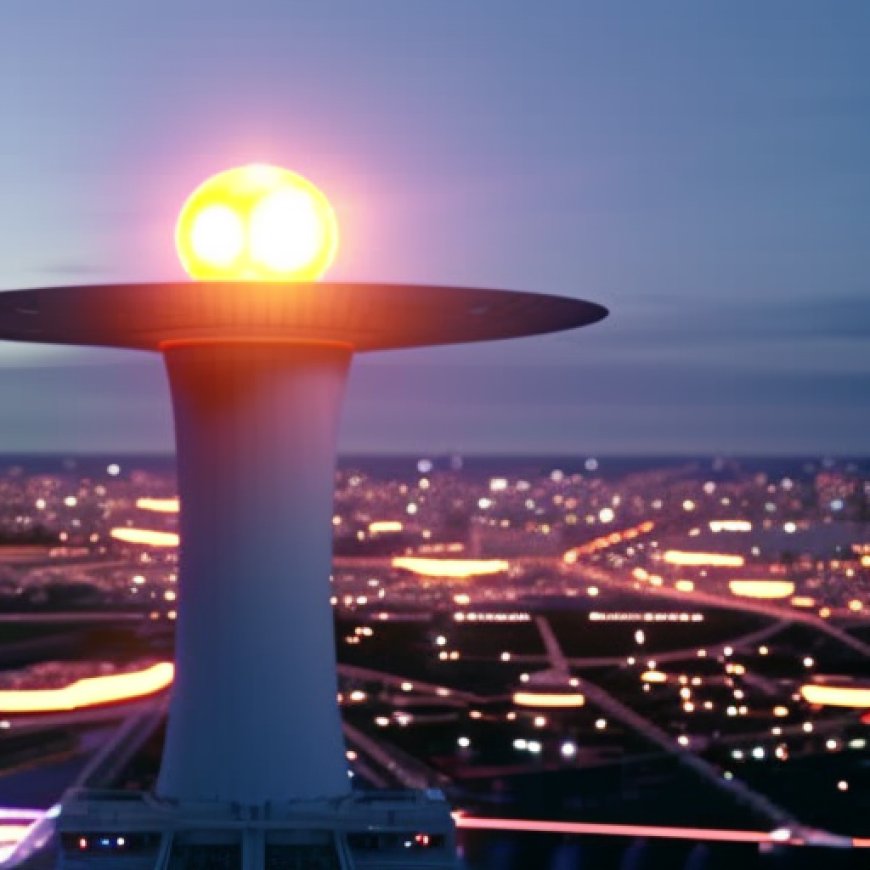Newbuild: Big Energy Users Eye Nuclear and Other Clean Technologies
Newbuild: Big Energy Users Eye Nuclear and Other Clean Technologies Energy Intelligence


Google, Microsoft, and Nucor Corp. Collaborate to Drive Advanced Clean Energy Technologies

Google, Microsoft, and steel producer Nucor Corp. have joined forces to collaborate on pooling their demand and developing new business models to support the launch of advanced clean energy technologies. These technologies include advanced nuclear, next-generation thermal, clean hydrogen, and long-duration storage. This collaboration aligns with the Sustainable Development Goals (SDGs) set by the United Nations.
Driving Sustainable Development Goals
The collaboration between Google, Microsoft, and Nucor Corp. aims to contribute to the achievement of the SDGs by promoting the development and adoption of advanced clean energy technologies. By leveraging their collective demand and expertise, the companies seek to drive innovation and create a sustainable future.
Focus on Advanced Nuclear and Microreactors
One of the immediate beneficiaries of this collaboration will likely be developers of microreactors in the nuclear sphere. Microreactors are a promising technology that can provide clean and reliable energy in a compact form. By supporting the development of microreactors, Google, Microsoft, and Nucor Corp. are advancing SDG 7: Affordable and Clean Energy.
Expanding Commercial Demand for Low-Carbon Electricity
This collaboration reflects a broader trend of emerging commercial demand for low-carbon electricity across the nuclear sector. As the world transitions towards a more sustainable energy system, there is an increasing need for clean and reliable power sources. Advanced clean energy technologies, such as advanced nuclear and next-generation thermal, play a crucial role in meeting this demand while reducing greenhouse gas emissions. This aligns with SDG 13: Climate Action.
Enabling Clean Hydrogen and Long-Duration Storage
In addition to advanced nuclear technologies, the collaboration also focuses on the development of clean hydrogen and long-duration storage solutions. Clean hydrogen is a versatile fuel that can be used in various sectors, including transportation and industry, to reduce carbon emissions. Long-duration storage technologies are essential for balancing intermittent renewable energy sources and ensuring a stable and resilient grid. These efforts contribute to SDG 9: Industry, Innovation, and Infrastructure.
Conclusion
The collaboration between Google, Microsoft, and Nucor Corp. represents a significant step towards driving advanced clean energy technologies and achieving the SDGs. By pooling their demand and expertise, these companies are fostering innovation and creating new business models that support a sustainable future. This collaboration serves as an example of how public-private partnerships can accelerate the transition to a low-carbon economy and contribute to global efforts for a more sustainable world.
SDGs, Targets, and Indicators
1. Which SDGs are addressed or connected to the issues highlighted in the article?
- SDG 7: Affordable and Clean Energy
- SDG 9: Industry, Innovation, and Infrastructure
- SDG 13: Climate Action
The article discusses the collaboration between Google, Microsoft, and Nucor Corp. to develop advanced clean energy technologies. This aligns with SDG 7, which aims to ensure access to affordable, reliable, sustainable, and modern energy for all. It also relates to SDG 9, which focuses on promoting inclusive and sustainable industrialization and fostering innovation. Additionally, the development of clean energy technologies contributes to SDG 13, which aims to take urgent action to combat climate change and its impacts.
2. What specific targets under those SDGs can be identified based on the article’s content?
- SDG 7.2: Increase substantially the share of renewable energy in the global energy mix.
- SDG 9.4: Upgrade infrastructure and retrofit industries to make them sustainable.
- SDG 13.2: Integrate climate change measures into national policies, strategies, and planning.
The collaboration between Google, Microsoft, and Nucor Corp. aims to develop advanced clean energy technologies, which can contribute to increasing the share of renewable energy in the global energy mix (SDG 7.2). The development of these technologies also aligns with the target of upgrading infrastructure and retrofitting industries to make them sustainable (SDG 9.4). Furthermore, by focusing on clean energy, the initiative supports the integration of climate change measures into national policies, strategies, and planning (SDG 13.2).
3. Are there any indicators mentioned or implied in the article that can be used to measure progress towards the identified targets?
Yes, the article mentions the development of advanced nuclear, next-generation thermal, clean hydrogen, and long-duration storage technologies. These technologies can serve as indicators to measure progress towards the identified targets. For example, an increase in the deployment and utilization of advanced nuclear reactors, next-generation thermal systems, and clean hydrogen production facilities would indicate progress towards SDG 7.2. Similarly, the development and implementation of long-duration storage solutions would contribute to achieving SDG 9.4.
Table: SDGs, Targets, and Indicators
| SDGs | Targets | Indicators |
|——|———|————|
| SDG 7: Affordable and Clean Energy | SDG 7.2: Increase substantially the share of renewable energy in the global energy mix. | – Deployment of advanced nuclear reactors.
– Utilization of next-generation thermal systems.
– Production of clean hydrogen. |
| SDG 9: Industry, Innovation, and Infrastructure | SDG 9.4: Upgrade infrastructure and retrofit industries to make them sustainable. | – Development and implementation of long-duration storage solutions. |
| SDG 13: Climate Action | SDG 13.2: Integrate climate change measures into national policies, strategies, and planning. | – Collaboration between technology companies and industrial sectors to develop advanced clean energy technologies. |
Behold! This splendid article springs forth from the wellspring of knowledge, shaped by a wondrous proprietary AI technology that delved into a vast ocean of data, illuminating the path towards the Sustainable Development Goals. Remember that all rights are reserved by SDG Investors LLC, empowering us to champion progress together.
Source: energyintel.com

Join us, as fellow seekers of change, on a transformative journey at https://sdgtalks.ai/welcome, where you can become a member and actively contribute to shaping a brighter future.







